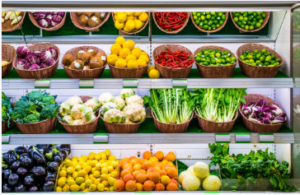Commercial Refrigeration
Business refrigeration systems are indispensable tools for preserving food, drinks, and flowers. These devices use an ingenious cooling process that converts gas into a liquid and vice versa – meaning refrigeration needs can always be met efficiently.
 Modern units use significantly less energy, are quieter and last longer. Furthermore, they employ new refrigerants without the potential for ozone depletion or global warming impact.
Modern units use significantly less energy, are quieter and last longer. Furthermore, they employ new refrigerants without the potential for ozone depletion or global warming impact.
Refrigerators
Cold Logic commercial refrigeration Melbourne maintains food and beverage cold storage environments for safe consumption later. You’ll often find these appliances in restaurants, stores and residential properties.
Refrigerators are the main type of refrigeration system and come in various sizes to meet different needs. Some are freestanding units, while others are built into buildings or restaurants as part of wall units. Their size also plays a factor; larger refrigerators consume more power.
Whether built into the wall or freestanding, refrigerators require doors to prevent heat and air from entering or exiting. Doors may be solid or transparent depending on their application; refrigeration units use thermostats to regulate their temperatures within an acceptable range.
Before buying a refrigerator for their business, owners should assess their space and kitchen layout to select an ideal model to meet their needs and fit seamlessly with existing designs. When deciding, they should also consider what kind of door they require – counter depth, full depth or built-in -. Counter-depth refrigerators feature flush cabinetry fitting for an eye-catching custom look but may be more costly due to limited storage capacity and reduced durability.
Freezers
A freezer is an appliance or compartment used to preserve foods at extremely low temperatures, with commercial freezers typically found in businesses like restaurants, supermarkets, and grocery stores, keeping foods fresher for longer while protecting them from potential microbial contamination.
Freezers use thermodynamic cycles that involve compression and evaporation to produce cool air temperatures, with refrigerants (any gas that absorbs heat) compressed until they turn into an intensely hot liquid before passing through an evaporator to cool air before changing back to gas form and repeating this cycle over and over.
There are various Cold Logic commercial refrigeration Melbourne models, such as upright and chest units, refrigerator-freezer combinations, and frost-free and manual defrost types, although frost-free models will likely need more frequent defrosting.
Chest freezers are an economical and energy-efficient option for short-term storage, offering capacity ranging from 2.1 cubic feet to 40 cubic feet of food storage space. Furthermore, their lower profile helps them save on energy usage compared to upright freezers since cold air does not have to be forced up through fans and moved by them.
Commercial freezers often feature an anti-sweat heater to warm the unit’s exterior and prevent condensation from forming. They typically come equipped with switches enabling kitchen staff to turn this device on or off depending on ambient conditions.
Coolers
Refrigerators keep ingredients, beverages, and prepared foods cold and fresh at the ready for quick prep work or keep drinks chilled and ready for guests. Choose from an assortment of sizes and styles that best meet your needs.
Commercial coolers have thick, hard foam insulation to reduce temperatures and protect food from freezer burn. This insulation works by slowing both convection – the flow of hot air around a cooler’s contents — and conduction – the transference of heat directly from warmer objects to colder ones – helping preserve freshness in food stored within.
Some coolers use thermoelectric cooling systems instead of refrigeration processes to heat or chill food items, using the Peltier effect to warm or chill ingredients as needed. These units plug directly into an electrical outlet.
Undercounter Refrigeration
Whether you don’t have room for a large refrigerator or need an additional refrigerator for condiments and produce storage purposes, undercounter models offer several solutions. Commonly found in hotels, behind-the-bar restaurants and even some residential kitchens – undercounter units provide added flexibility.
Most undercounter units are installed beneath existing counters to remain out of sight and concealed from view. They may feature either doors or drawers; those used for food prep typically utilise drawers to store small items like sauce and dressing containers, while units used to merchandise, such as holding bottles outside check-out counters, may use swing doors so passersby can view what’s inside.
Back bar coolers are similar to undercounter refrigerators in that they’re designed to store beverages such as bottles and cans. Most back bar coolers feature two or three sections and can reach lengths up to 6 feet long, making this refrigeration especially popular among convenience stores, gas stations and other locations offering grab-and-go foods and beverages.
Roller Door Repair Adelaide
Electric Bikes For Sale
You May Also Like

Wildlife and Fisheries Resources Program
August 4, 2019
The Forest Resources Management Program
August 28, 2021
